Wild Mushroom Pizza with Taleggio and Thyme/Nature’s Healers
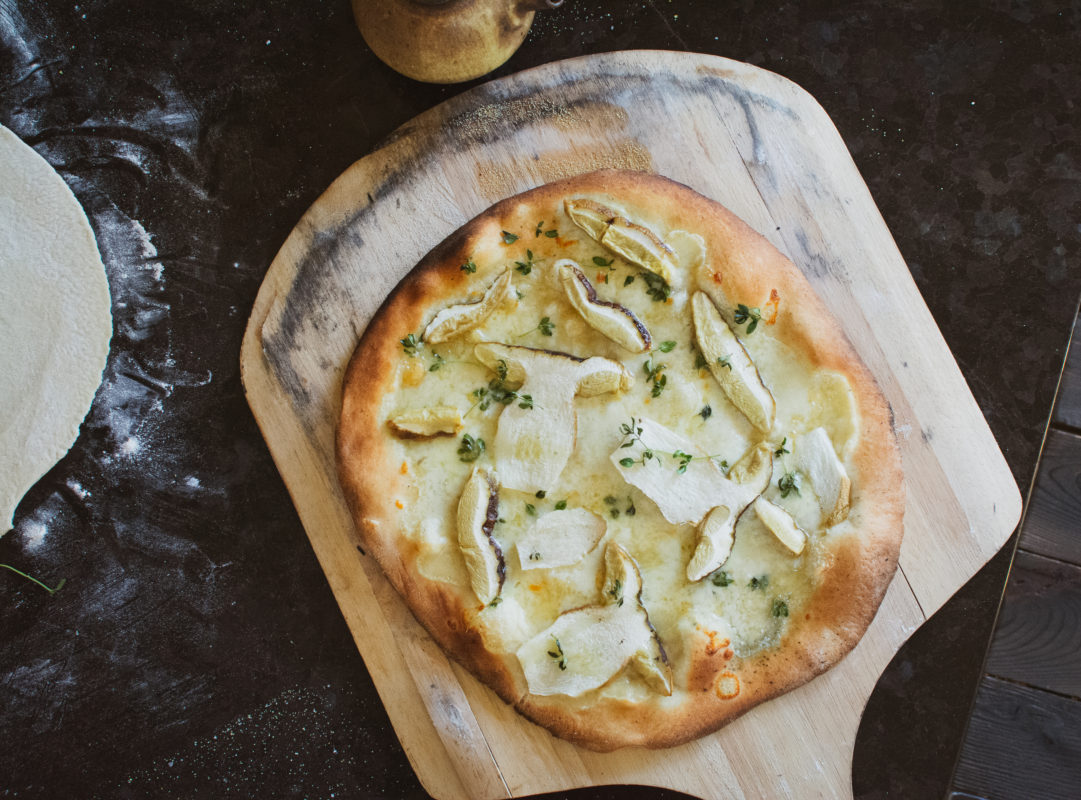
A New Pastime
One positive that has come of this global pandemic is the upswing in interest in outdoor activities. Camping and biking are obvious, but there is one hobby that is seeing a surge in popularity that is less mainstream. Literally. Meaning that sometimes, you might have to be willing to possibly cross through a freezing, rushing stream–barely clinging to slippery rocks or low-hanging pine branches to get to the other side where the soil temperature is just right, the elevation is correct, and there are plenty of symbiotic trees nearby. Once regarded by most as an eccentric and possibly dangerous endeavor, mushroom hunting is now throwing off that bohemian misfit image and becoming popular.
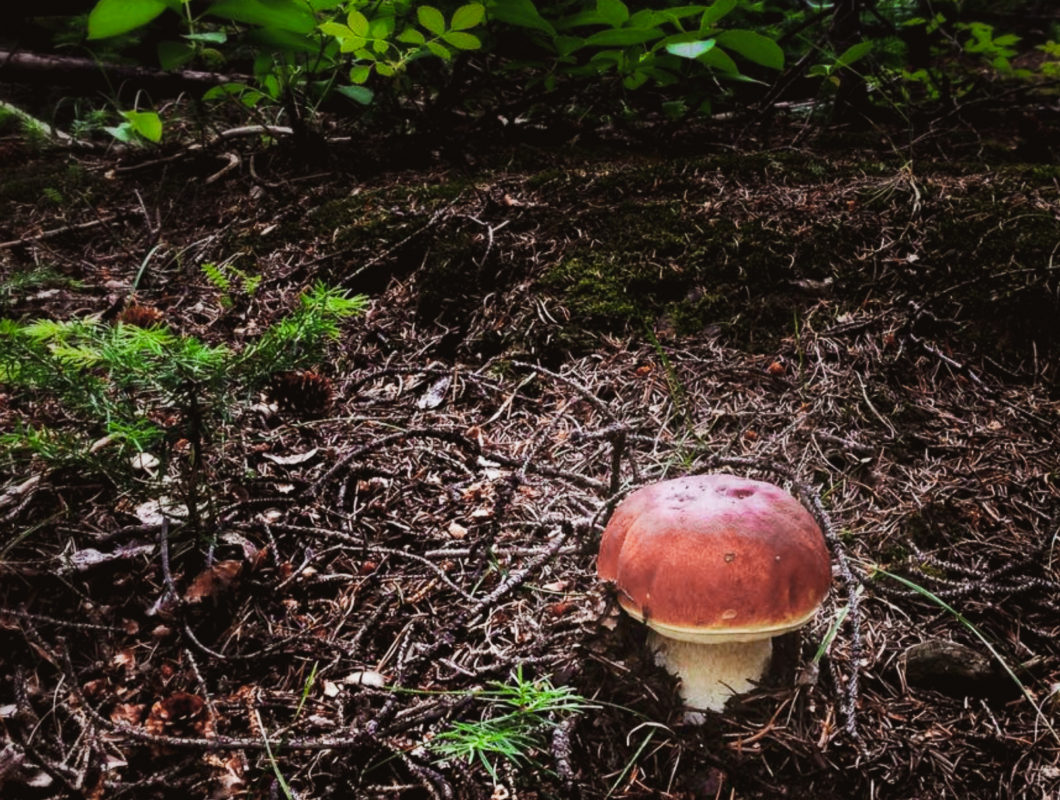
So what’s the appeal? It’s different from picking apple-picking or gathering berries. Mushrooms offer no guarantee. Despite the fact that you may have found them in one particular spot last year–and you didn’t tell a soul besides your hunting buddies where it is–you may not find any this year. Mushroom hunting requires that you understand the precise conditions that are necessary in order for them to grow. One indicator is to look for scars in the earth–perhaps where a trail was cut; where telephone lines run. If there are fallen trees, or if a fire occurred in that forest the chances are greater that they can be found there. Mushrooms tend to appear where the earth needs to be healed. Why is that?
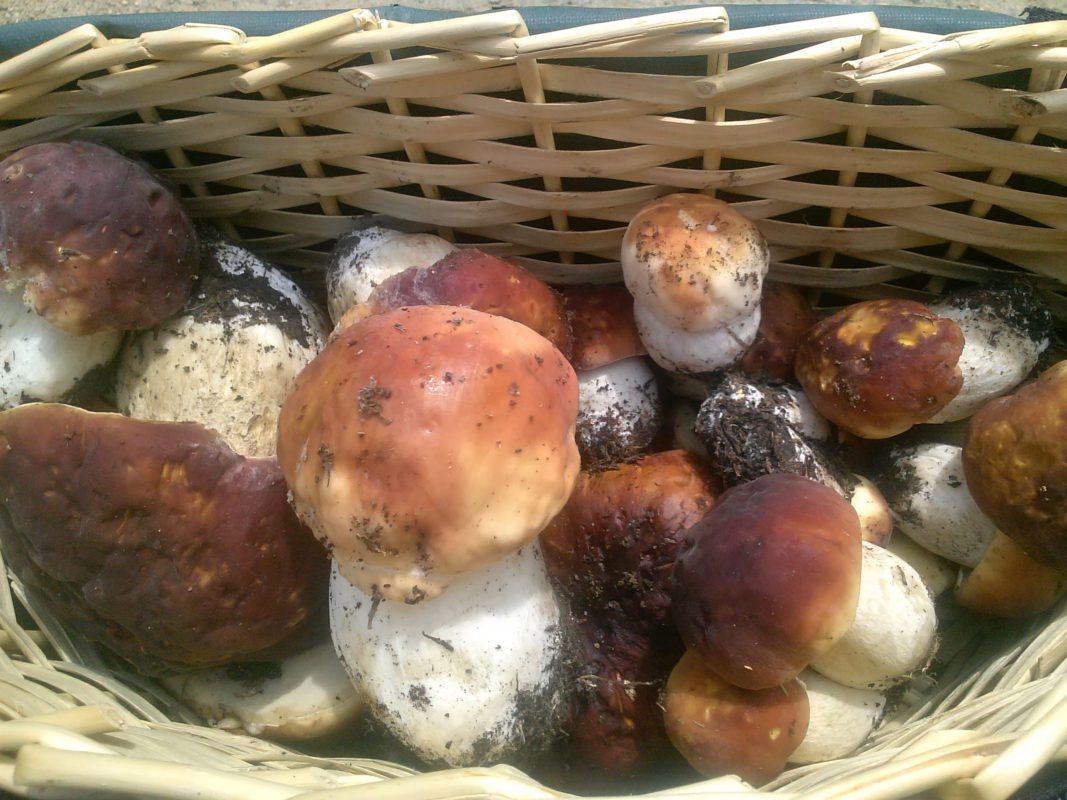
Humans have harnessed the powers of fungi for thousands of years to ferment foods. Their potential in helping to solve environmental issues such as oil spills are being explored. If they heal the earth, it makes sense that they could heal humans as well. Can you imagine the health benefits to our bodies? It is only relatively recently that they are being studied for their potential in finding a cure for cancer and autoimmune diseases. Mushrooms are an amazing gift from nature. They also happen to be delicious.
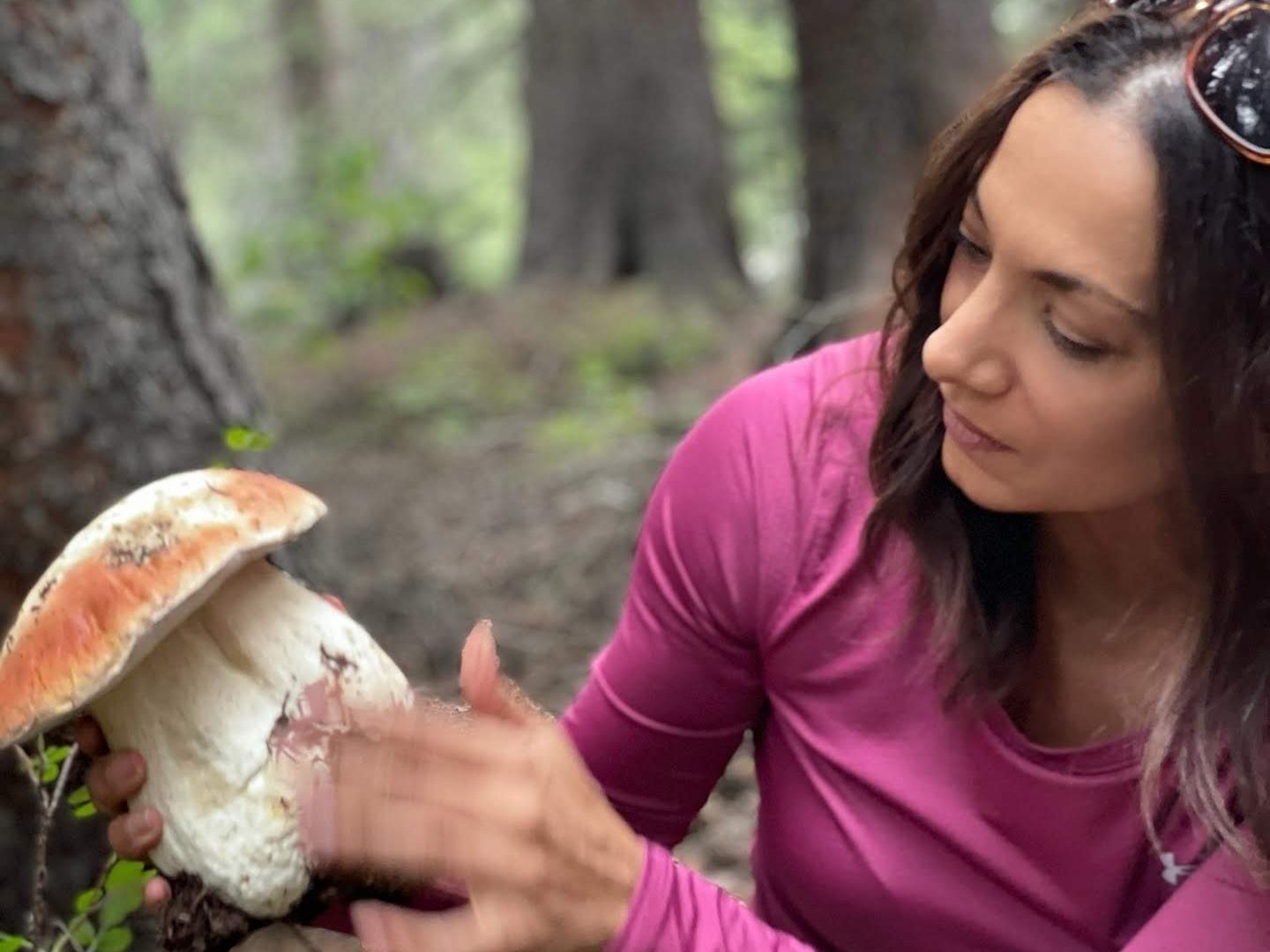
Nature’s Healers
Going back to that symbiotic relationship with plants, we know that fungi are essential to the ecosystem. Underneath that pretty forest floor lies a huge network of complex fungi that spreads out and forms a web. This webbed network, called mycelia, helps to push out rocks and other obstructions that might otherwise prevent the absorption of nutrients. In exchange, the mycelia receive carbon and carbohydrates from the plant. These intelligent networks can also change their growth patterns in response to the environment and spread where they are needed. So it makes sense that their fruits, the mushrooms that emerge above ground, are more plentiful in those areas.
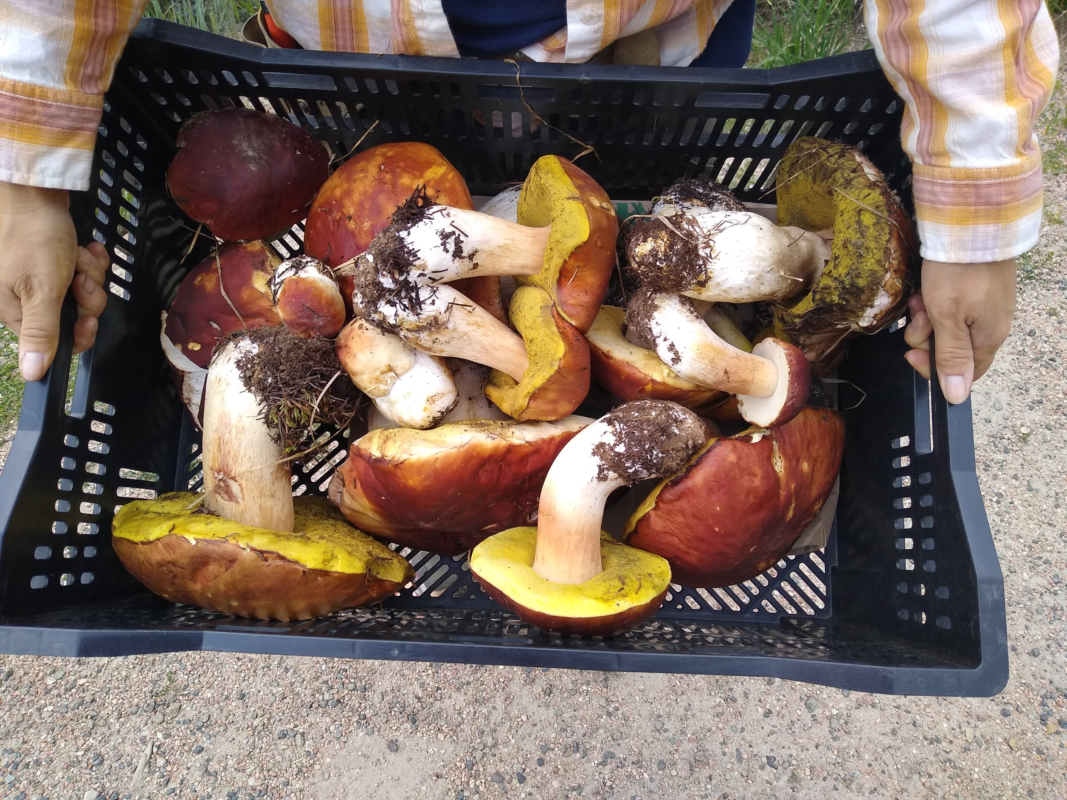
Proper I.D.
Here in Colorado we have an abundance of boletes (otherwise known as porcini) that emerge from our forests every summer. Several years ago I joined a group of mycologists on a mushroom foray. That was how I learned the basic keys to finding and identifying porcini. One: look for a water source such as a river or stream. Second, find the area with an abundance of Douglas Fir trees–these are the trees that porcini have a symbiotic relationship with. Third, check for disruptions in the forest–perhaps fallen trees in a clearing. Look around until you spot their reddish-brown caps that resemble a beautifully browned bun. Don’t get too excited yet, though. First, check that the underside of the cap looks like a sponge and does NOT have gills. The gilled mushrooms are porcini look-alikes from the genus Leccinum. They aren’t poisonous but they are also not delicious. Check the stem to be sure that it is a smooth white color that often has a kind of netting-almost like a cantaloupe. The look-alike Leccinum will have black or brown “scabers” on the stalk that make it look like it needs a shave. Next, cut into the bottom of the stem with a knife. If it turns a brilliant blue, it’s not what you want. Did it stay a creamy white color? If so, congratulations–you’ve bagged the rare King Bolete or Porcini mushroom.
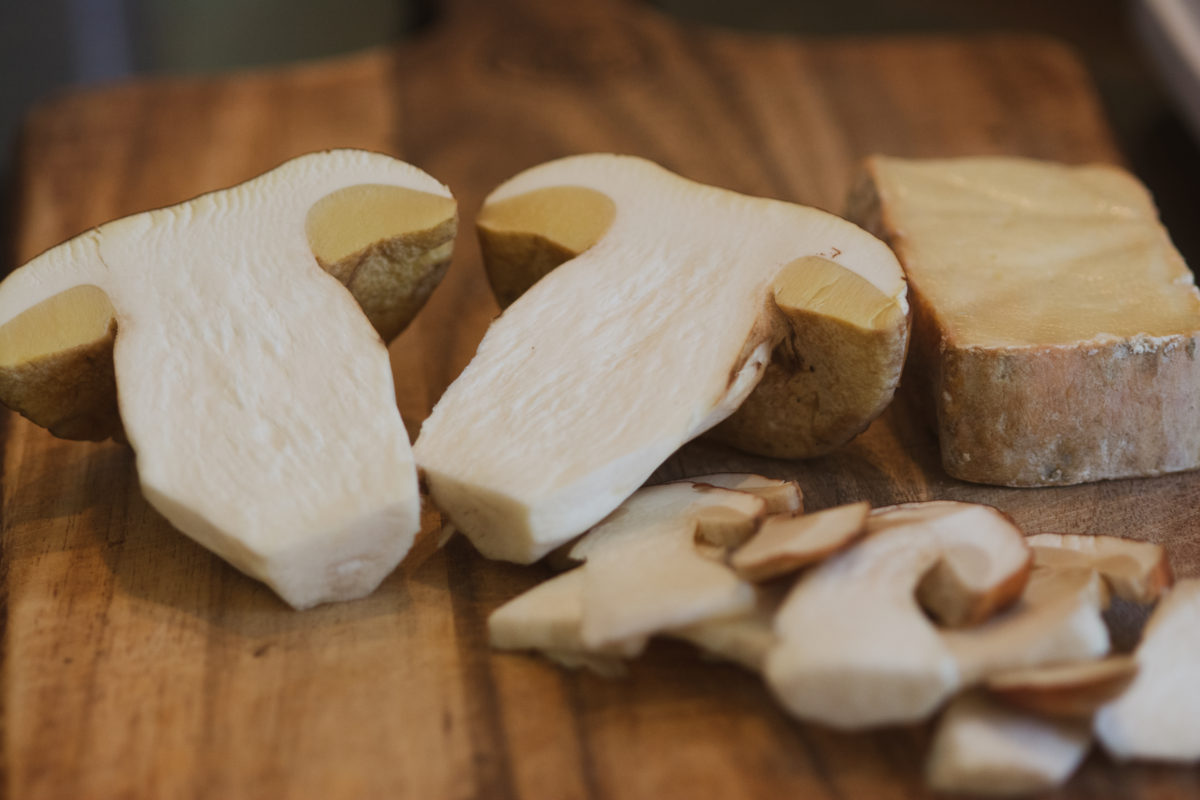
One of the mycologists on our foray happened to also be a chef–a happy combination, no doubt. From his pack he pulled a knife and cutting board, a propane cooktop and a stick of butter and cooked them right there in the forest. They were delicious just like that, but I love to slice fresh porcini onto a pizza, paired with taleggio–a mild, fruity but slightly funky cheese that compliments the nutty, sweet flavor of the porcini. Nothing quite matches the flavor of a fresh porcini, but since they are definitely not available everywhere, it’s perfectly acceptable to sub in another wild mushroom or cremini.
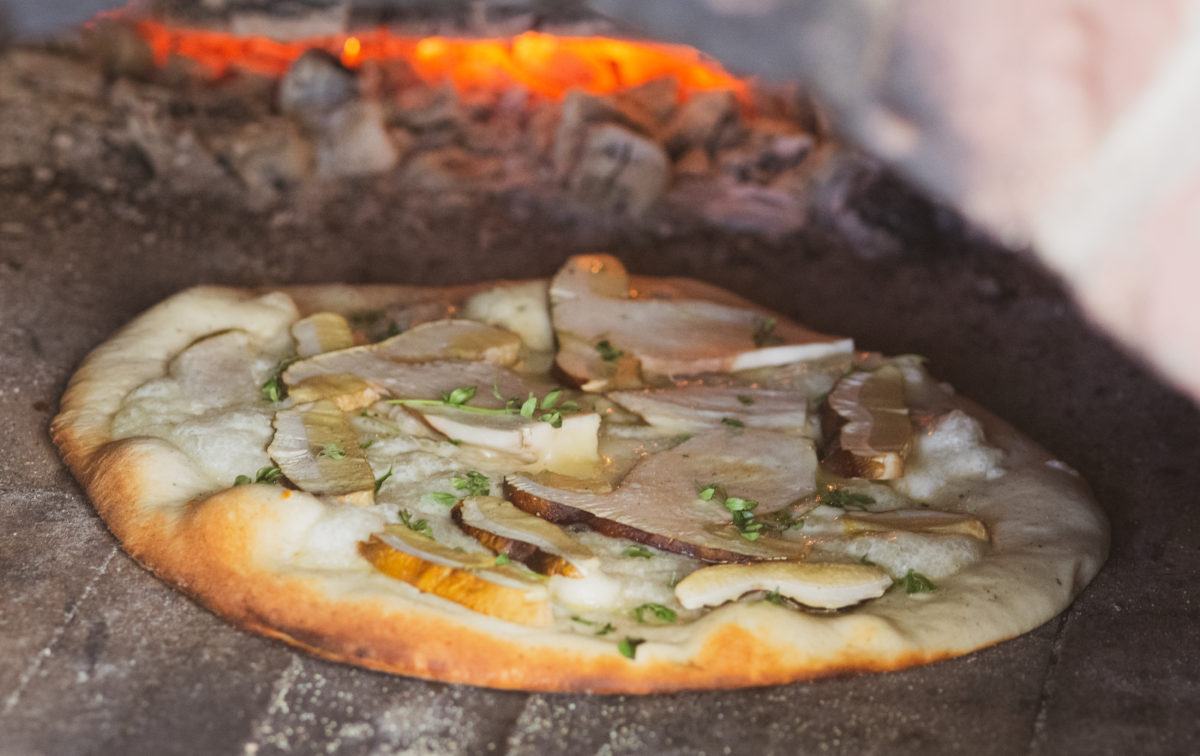
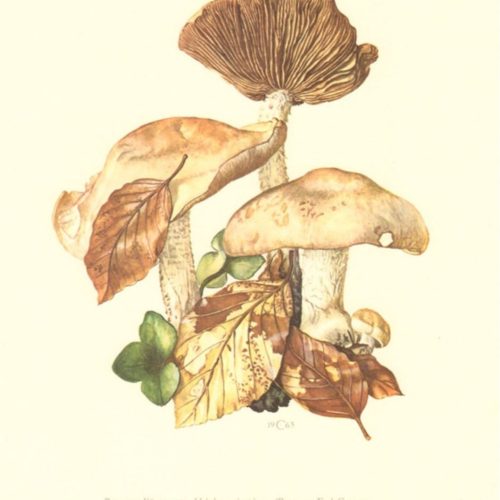
Wild Mushroom Pizza with Taleggio and Thyme
Ingredients
- 1 16oz pizza dough
- 2 tbs olive oil
- 6 oz Taleggio cheese
- 3 oz mozzarella cheese, shredded
- 3 tbsp fresh thyme leaves
- salt and pepper to taste
- semolina flour or all-purpose flour
Instructions
- For a thin-crust pizza, cut 16oz pre-made dough into two equal pieces. For a thicker crust, use the full crust for one pizza. Roll or tuck dough in to shape into a ball. Place onto a lightly-floured baking sheet and cover with a clean kitchen towel. Allow to rest and slightly rise at room temperature until until soft and surface looks smooth.
- Preheat an oven to 500 degrees. Place a pizza stone on the lowest rack to also preheat in the oven. Remove any racks above the stone.
- Clean your mushrooms using your preferred method. Quickly rinsing mushrooms in water and then using a paper towel to remove dirt is perfectly acceptable. Some more heavily soiled wild mushrooms might need the outer layer of their stem peeled off. Slice mushrooms to about 1/4" thickness.
- Using your fingers, begin to flatten and push the dough evenly out from the center until it measures about 7 to 8 inches in diameter. Sprinkle semolina flour all over the surface of a pizza peel, and set aside. Lift the dough off the surface, and center it on top of your fists. Hold your fists about 1 to 2 inches apart. Begin to rotate and stretch the dough, moving your fists until they are 6 to 8 inches apart and the dough is several inches larger. Then place your fists under the inside of the outer edge, and continue to stretch the dough a little at a time until it reaches about 12 inches in diameter. At this stage, it is important to keep your fists along the inside of the outer edge and watch that the dough does not get too thin or tear in the center. At the same time, make sure to maintain the slightly raised border on the edges. The dough is surprisingly resilient and will not tear if this step is done carefully and slowly. Place gently back down onto floured pizza peel. You can arrange it into a neat circle at this point.
- Brush dough top with olive oil. Season lightly with salt and pepper. Top dough with mozzarella cheese and taleggio cheese. You can choose to cut the rind off of your taleggio cheese or not–it's a matter of taste. Either way, break the cheese into small chunks and spread evenly over the dough.
- Place mushrooms evenly over pizza, tucking a few edges into the cheese, then sprinkle with thyme leaves. Season lightly again with salt and pepper.
- Slide pizza from the peel onto the preheated stone in your oven. Use a quick back-and-forth motion to loosen the pizza onto the center of the stone. Bake until the crust is golden brown and crisp on the edges and the bottom, 10 to 12 minutes, turning the pizza halfway through baking. Watch your pizza carefully—cooking time will vary based on the thickness of your crust and the strength of your oven.
- Using tongs, lift the edge of the first pizza, and slide the peel all the way under to remove it from the oven. Using a pizza wheel, slice the pizza into eight pieces, and serve immediately.
